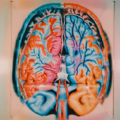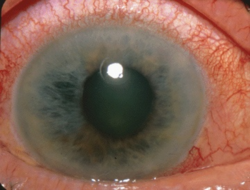Every now and again, we see a flurry of press releases flooding social media about new research purporting to prove that endocrine disruptors are safe. Most recently, the press has been focused Bisphenol A or BPA. New FDA proclamations suggest that it has no impact on health. When one reads the actual research upon which these statements are based, it says no such thing. Unless of course, the research is funded by industry, then it is almost always positive. A report in Newsweek found:
In 2013, for example, the American Chemistry Council spent more than $11 million on lobbying expenses, according to the Center for Responsive Politics. Industry groups have also funded, and in some cases written up, research done by governmental scientists. One 2008 investigation, by the Milwaukee Journal Sentinel, found that “a government report claiming that bisphenol-A is safe was written largely by the plastics industry and others with a financial stake in the controversial chemical.”
The report goes on to state that the FDA
…dismissed as irrelevant the vast majority of the BPA safety studies its own scientists reviewed in preparation for that official position statement. According to the FDA, for example, all of the 48 epidemiological studies reviewed had ‘no utility’ for the agency’s risk assessment, the formal process it undertakes to decide if a chemical is safe for human health or not.
With such contradictory claims about safety, who should we believe? How do we evaluate the safety research about endocrine disruptors? Here is a primer.
Industry Sponsored Research Is Biased
In a mini-review of research on bisphenol A (BPA) – the endocrine disruptor in plastics, of the 115 studies published on adverse effects of BPA 81.7% (94) reported significant adverse health effects (2004). However, upon review, it was found that 90% of the government funded, academic research found significant adverse effects while 100% of the industry-sponsored research found no ill-effects of BPA – none. This is a common theme across all industries – pharmaceutical included. When billions of dollars are on the line, industry sponsored studies will show favorable results more often than not. Always check the author’s conflict-of-interest disclosures at the back the article. If none are reported though, don’t assume they do not exist. Not all conflicts of interests are disclosed. You may have to do additional digging to identify conflicts.
FDA or EPA Approved Does not Mean Safe or Risk-Free
Both agencies have long histories of approving and then failing to recall dangerous chemicals, drugs and devices from the market. Their work is particularly incompetent in reproductive (endocrine) and women’s health: thalidomide, DES, Yasmin/Yaz, HRT, Mirena, Prolift to name but a few that have garnered the seal of approval by the FDA. Phthalates, BPA, Glyphosate for the EPA. Remember the EPA doesn’t even study the female reproductive dangers unless research shows that a chemical impacts the male reproductive system.
Research Methods Matter
Perhaps more so than in any other field of science, endocrine research requires serious consideration of all aspects of the study protocol. This means that you cannot rely on a press release about the research to determine the study’s relevance. You must read the original research and evaluate the methods. (Reading original research is a good habit to have for all matters that affect your health and well-being). Once you pull the research, here are some things to consider.
- Length of study. Most hormone reactions are longer term and span generations. If the study is short duration, as in the case with the industry sponsored GMO research or doesn’t include third generation effects, as with BPA research – question the results.
- Population studied. Whether one is investigating a chemical or a drug in humans or in rodents, the sample population matters. Ascertaining safety of efficacy by testing only healthy young men, when the drug or chemical is meant for the real world where women, children, elderly, healthy and not so healthy individuals reside, is common practice and recipe for disaster. Same is true for rodent research – the strain, sex, age and health of the animal must be considered if the work is to be extrapolated to real humans. I read one study claiming that BPA was safe, but they used a strain of rats that was resistant to environmental estrogens. Of course, BPA’s estrogens would not affect these estrogen-resistant rodents.
- Outcomes measured. What does the study measure and how does it evaluate change? More often than not, industry sponsored research will not measure the appropriate endpoints or reproductive dangers. Sometimes this is sleight of hand, other times it is simply ignorance of the endocrine system’s far-reaching regulatory control. In either case, one has to evaluate what the study actually measures before determining its validity. Here, you can use a bit of personal experience – what systems, organs or behaviors are affected by your hormones? If the study didn’t measure any of these variables, then it’s probably not a very solid protocol.
- ‘Gold-standard’ protocols are not always golden. It takes years, decades even for ‘gold-standards’ to become the accepted methods – often well after their utility has run out and newer, more sophisticated tools have reached the market. This has been the case for endocrine testing and endocrine disruptor evaluation. If a study rests all of its findings using a gold standard, it may not be using the most sensitive testing methods.
- Clinical significance is not the same as statistical significance. Clinical significance means the chemical/drug has some meaningful impact on the health or well-being of the individual or animal. Statistical significance is just a math equation. A simple increase in sample size while limiting or ‘restructuring’ outcome variables is all it takes to derive statistical significance in most research. Does that mean the drug or chemical has clinically relevant health effects – not necessarily. The opposite is also true. Want to obfuscate the dangers of a drug/chemical? Do a huge study (preferably by combining dozens of poor quality individual studies into a meta analysis), throw everything but the kitchen sink into the analysis, do simple stats and highlight the lack of statistical significance in the death or injury rates. Only a small fraction of the study population died – but it wasn’t statistically significant, so the drug/chemical is considered safe. If the study does not study distinguish between clinical and statistical significance or downplays the death and injury rates as statistically insignificant, approach cautiously.
- Hormone reactions do not conform to linear statistics. Damn it, how dare our complex physiology not conform to the simplicity of linear statistics. A common dose-response curve is highly linear, where a small dose elicits a similarly small response and a larger dose increase the response size. This is not case when dealing with endocrine disruptors. Hormone systems are complex and highly non-linear. Hormone dose-response curves are often in the shape of an inverted U where low doses elicit huge responses, mid-level doses elicit minimal responses and high doses again elicit huge responses. And so, any study measuring hormone effects using simple, linear, dose response calculations is bound to miss the effects entirely.
- Hormones have metabolites (as does everything else). Metabolites evoke their own reactions. We know that some of the metabolites from BPA are stronger, 1000X stronger in fact, than BPA itself. Studies that don’t address the full complement of hormone products that circulate in our bodies as a result of exposure to something like BPA will severely underestimate the safety issues.
In a nutshell, we have to do our homework. There is no simple ‘Good Housekeeping Seal of Approval’ for products that impact health and well-being. We wouldn’t trust the marketing put out by car manufacturers or, worse yet, a car salesmen, about the safety, gas efficiency, repair history and comfort of a new/used car; why do we trust the makers of chemicals to give us the straight story. We shouldn’t. We have to become educated consumers of health research in order to protect ourselves.
We Need Your Help
More people than ever are reading Hormones Matter, a testament to the need for independent voices in health and medicine. We are not funded and accept limited advertising. Unlike many health sites, we don’t force you to purchase a subscription. We believe health information should be open to all. If you read Hormones Matter, like it, please help support it. Contribute now.
Yes, I would like to support Hormones Matter.
Photo by Markus Winkler on Unsplash.
This article was published previously in March 2013 and updated and edit for republication in 2015.





































